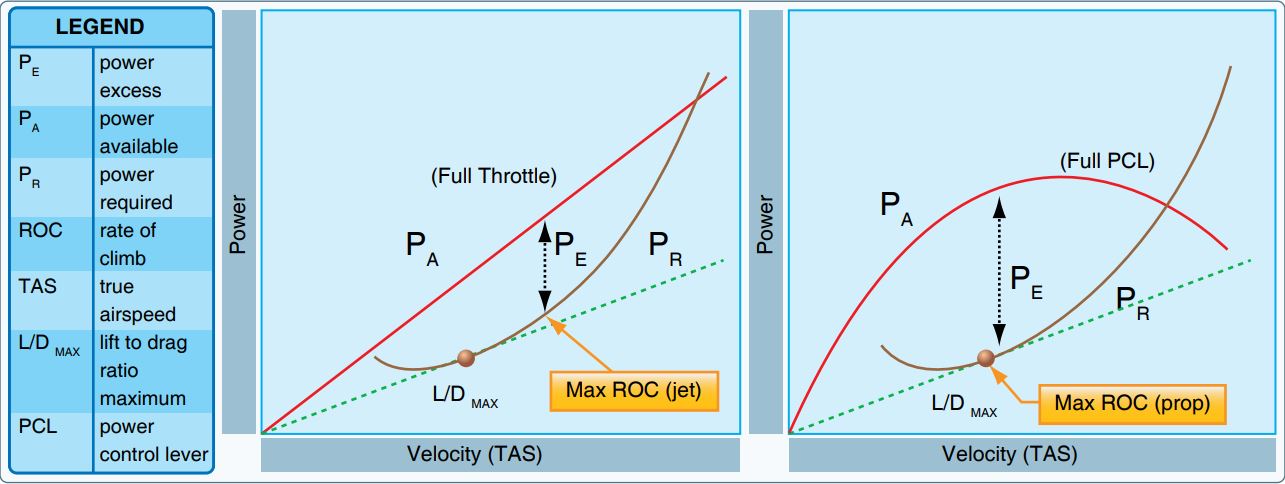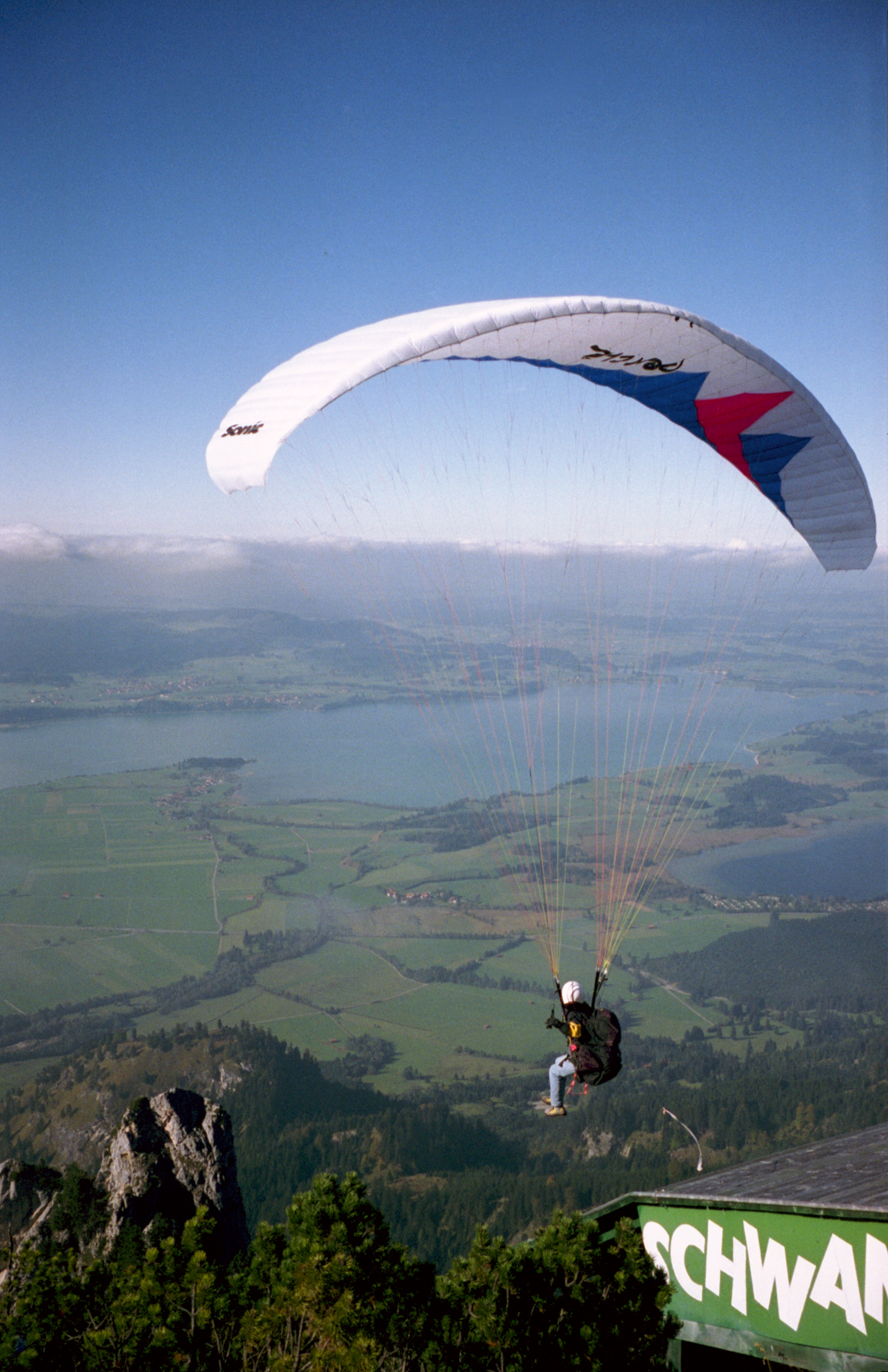|
Bede Wing
The Bede Wing was an inflated Hang gliding, hang glider, designed in the 1970s by aeronautical engineer Jim Bede. Intended as a safer alternative to conventional hang gliders, it resembled an early Parachute#Ram-air, ram-air parachute, but instead was an inflatable structure, that could be filled with air for gliding, or with helium to act as a gas balloon. The aspect ratio of the Bede Wing was low, in the area of 1.8. Fitted with unusually long suspension lines, the Bede Wing had almost no dihedral (aircraft), dihedral. It was also reported to have a lower sink rate than conventional hang gliders of the time.''Air Facts: the magazine of safe flying'', volume 37. Air Facts, Inc., 1974. Although Bede intended to start full production of the Bede Wing, the project came to nothing. However, it foreshadowed the introduction of Ram-air intake, ram-air inflated Paragliding, paragliders in the mid-1980s. See also References External links Bede wing in flight {{Bede aircraft Bed ... [...More Info...] [...Related Items...] OR: [Wikipedia] [Google] [Baidu] |
Bede Aircraft
Bede Aircraft Corporation was founded by aeronautical engineer Jim Bede in Cleveland in 1961 to produce the BD-1 kit aircraft, which eventually became the American Aviation Corporation's AA-1. The company also created and produced a number of advanced kit planes including the famous Bede BD-5 (pusher propeller driven) and BD-5J (turbojet driven). The BD-5J has held the Guinness record as the World's Smallest Jet Aircraft for more than a quarter century. Versions of it saw use in various Budweiser commercials (the Bud Light Jet, which was lost in an inflight fire and crash unrelated to airshow work). The tiny jet also appeared in two James Bond movies; ''Octopussy'' starring Sir Roger Moore, and later in a cameo appearance, hanging from the wall of Q's workshop in ''Die Another Day'' starring Pierce Brosnan as Agent 007. A later design, the BD-10 powered by the same engine ( GE J-85) used on Lear Jet business jets, claimed to be the first supersonic personal jet built fro ... [...More Info...] [...Related Items...] OR: [Wikipedia] [Google] [Baidu] |
Sink Rate
In aeronautics, the rate of climb (RoC) is an aircraft's vertical speed, that is the positive or negative rate of altitude change with respect to time. In most ICAO member countries, even in otherwise metric countries, this is usually expressed in feet per minute (ft/min); elsewhere, it is commonly expressed in metres per second (m/s). The RoC in an aircraft is indicated with a vertical speed indicator (VSI) or instantaneous vertical speed indicator (IVSI). The temporal rate of decrease in altitude is referred to as the rate of descent (RoD) or sink rate. A negative rate of climb corresponds to a positive rate of descent: RoD = −RoC. Speed and rate of climb There are a number of designated airspeeds relating to optimum rates of ascent, the two most important of these are ''VX'' and ''VY''. ''VX'' is the indicated forward airspeed for best angle of climb. This is the speed at which an aircraft gains the most altitude in a given horizontal , typically used to avoid a colli ... [...More Info...] [...Related Items...] OR: [Wikipedia] [Google] [Baidu] |
Balloons (aeronautics)
A balloon is a flexible bag that can be inflated with a gas, such as helium, hydrogen, nitrous oxide, oxygen, and air. For special tasks, balloons can be filled with smoke, liquid water, granular media (e.g. sand, flour or rice), or light sources. Modern day balloons are made from materials such as rubber, latex, polychloroprene, or a nylon fabric, and can come in many different colors. Some early balloons were made of dried animal bladders, such as the pig bladder. Some balloons are used for decorative purposes or entertaining purposes, while others are used for practical purposes such as meteorology, medical treatment, military defense, or transportation. A balloon's properties, including its low density and low cost, have led to a wide range of applications. The rubber balloon was invented by Michael Faraday in 1824, during experiments with various gases. He invented them for use in the lab. Applications Play Decoration Balloons are used for decorating birthday par ... [...More Info...] [...Related Items...] OR: [Wikipedia] [Google] [Baidu] |
Inflatable Aircraft
An inflatable is an object that can be inflated with a gas, usually with air, but hydrogen, helium and nitrogen are also used. One of several advantages of an inflatable is that it can be stored in a small space when not inflated, since inflatables depend on the presence of a gas to maintain their size and shape. Function fulfillment per mass used compared with non-inflatable strategies is a key advantage. Stadium cushions, impact guards, vehicle wheel inner tubes, emergency air bags, and inflatable space habitats employ the inflatable principle. Inflation occurs through several strategies: pumps, ram-air, blowing, and suction. Although the term ''inflatable'' can refer to any type of inflatable object, the term is often used in boating to specifically refer to inflatable boats. Types High-pressure vs. low-pressure A distinction is made between high-pressure and low-pressure inflatables. In a high-pressure inflatable, structural limbs like pillars and arches are built out o ... [...More Info...] [...Related Items...] OR: [Wikipedia] [Google] [Baidu] |
Bede Aircraft
Bede Aircraft Corporation was founded by aeronautical engineer Jim Bede in Cleveland in 1961 to produce the BD-1 kit aircraft, which eventually became the American Aviation Corporation's AA-1. The company also created and produced a number of advanced kit planes including the famous Bede BD-5 (pusher propeller driven) and BD-5J (turbojet driven). The BD-5J has held the Guinness record as the World's Smallest Jet Aircraft for more than a quarter century. Versions of it saw use in various Budweiser commercials (the Bud Light Jet, which was lost in an inflight fire and crash unrelated to airshow work). The tiny jet also appeared in two James Bond movies; ''Octopussy'' starring Sir Roger Moore, and later in a cameo appearance, hanging from the wall of Q's workshop in ''Die Another Day'' starring Pierce Brosnan as Agent 007. A later design, the BD-10 powered by the same engine ( GE J-85) used on Lear Jet business jets, claimed to be the first supersonic personal jet built fro ... [...More Info...] [...Related Items...] OR: [Wikipedia] [Google] [Baidu] |
Powered Parachute
A powered parachute, often abbreviated PPC, and also called a motorized parachute or paraplane, is a type of aircraft that consists of a parafoil with a motor and wheels. The FAA defines a powered parachute as ''a powered aircraft a flexible or semi-rigid wing connected to a fuselage so that the wing is not in position for flight until the aircraft is in motion. The fuselage of a powered parachute contains the aircraft engine, a seat for each occupant and is attached to the aircraft's landing gear.'' While in flight, and due to the design of the parafoil, PPCs effectively travel at a fixed airspeed, typically about 25–35 mph (40–60 km/h). PPCs operate safely at heights ranging from a few feet off the ground (e.g., skimming, fly-bys) to altitudes as high as 10,000+ ft (3+ km), but typical operating heights are between 500 and 1500 feet (150–500 meters) above ground level (AGL). Equipped with a 5-15 gallon fuel tank (depending on the engine and weight limitations), PPCs c ... [...More Info...] [...Related Items...] OR: [Wikipedia] [Google] [Baidu] |
Paragliding
Paragliding is the recreational and competitive adventure sport of flying paragliders: lightweight, free-flying, foot-launched glider aircraft with no rigid primary structure. The pilot sits in a harness or lies supine in a cocoon-like 'pod' suspended below a fabric wing. Wing shape is maintained by the suspension lines, the pressure of air entering vents in the front of the wing, and the aerodynamic forces of the air flowing over the outside. Despite not using an engine, paraglider flights can last many hours and cover many hundreds of kilometres, though flights of one to two hours and covering some tens of kilometres are more the norm. By skillful exploitation of sources of lift, the pilot may gain height, often climbing to altitudes of a few thousand metres. History In 1966, Canadian Domina Jalbert was granted a patent for a ''multi-cell wing type aerial device—''"a wing having a flexible canopy constituting an upper skin and with a plurality of longitudinally extend ... [...More Info...] [...Related Items...] OR: [Wikipedia] [Google] [Baidu] |
Ram-air Intake
A ram-air intake is any intake design which uses the dynamic air pressure created by vehicle motion, or ram pressure, to increase the static air pressure inside of the intake manifold on an internal combustion engine, thus allowing a greater massflow through the engine and hence increasing engine power. Design features The ram-air intake works by reducing the intake air velocity by increasing the cross-sectional area of the intake ducting. When gas velocity goes down the dynamic pressure is reduced, while the static pressure is increased. The increased static pressure in the plenum chamber has a positive effect on engine power, both because of the pressure itself and the increased air density that this higher pressure gives. Ram-air systems are used on high-performance vehicles, most often on motorcycles and performance cars. The 1990 Kawasaki Ninja ZX-11 C1 model used a ram-air intake, the very first on any production motorcycle. Ram-air was a feature on some cars in the six ... [...More Info...] [...Related Items...] OR: [Wikipedia] [Google] [Baidu] |
Dihedral (aircraft)
In aeronautics, dihedral is the angle between the left and right wings (or tail surfaces) of an aircraft. "Dihedral" is also used to describe the effect of sideslip on the rolling of the aircraft. Dihedral angle is the upward angle from horizontal of the wings or tailplane of a fixed-wing aircraft. "Anhedral angle" is the name given to negative dihedral angle, that is, when there is a ''downward'' angle from horizontal of the wings or tailplane of a fixed-wing aircraft. Dihedral angle has a strong influence on dihedral effect, which is named after it. Dihedral effect is the amount of roll moment produced in proportion to the amount of sideslip. Dihedral effect is a critical factor in the stability of an aircraft about the roll axis (the spiral mode). It is also pertinent to the nature of an aircraft's Dutch roll oscillation and to maneuverability about the roll axis. Longitudinal dihedral is a comparatively obscure term related to the pitch axis of an airplane. It ... [...More Info...] [...Related Items...] OR: [Wikipedia] [Google] [Baidu] |
Jim Bede
James R. Bede (April 17, 1933 – July 9, 2015) was an American aircraft designer. He designed well over a dozen aircraft starting in the 1960s, but a string of business failures kept most of these designs out of widespread use. Bede Aviation Bede was raised in Cleveland, Ohio. He graduated from West Technical School in Cleveland in 1952 and attended Fenn College and the Municipal University of Wichita, receiving his Aeronautical Engineer Bachelor of Science Degree in 1957. He started work as a performance engineer with North American Aviation that year, where he worked on the FJ-4 Fury and A3J Vigilante projects for the United States Navy. He stayed at North American only briefly, returning home to Cleveland in 1961 to form Bede Aviation with his father James, in order to produce a kit-built aircraft of his own design, the BD-1. At the time, the general aviation market was priced beyond the means of the average consumer. Bede believed the way to solve this problem was ... [...More Info...] [...Related Items...] OR: [Wikipedia] [Google] [Baidu] |
Popular Science
''Popular Science'' (also known as ''PopSci'') is an American digital magazine carrying popular science content, which refers to articles for the general reader on science and technology subjects. ''Popular Science'' has won over 58 awards, including the American Society of Magazine Editors awards for its journalistic excellence in 2003 (for General Excellence), 2004 (for Best Magazine Section), and 2019 (for Single-Topic Issue). With roots beginning in 1872, ''Popular Science'' has been translated into over 30 languages and is distributed to at least 45 countries. Early history ''The Popular Science Monthly'', as the publication was originally called, was founded in May 1872 by Edward L. Youmans to disseminate scientific knowledge to the educated layman. Youmans had previously worked as an editor for the weekly ''Appleton's Journal'' and persuaded them to publish his new journal. Early issues were mostly reprints of English periodicals. The journal became an outlet for writings ... [...More Info...] [...Related Items...] OR: [Wikipedia] [Google] [Baidu] |






